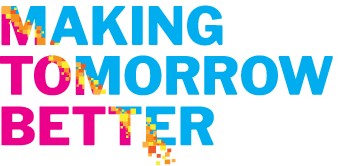Stage One: Discover
The Pre-design Process
By Jason Guille (Stream of Consciousness), Lynn Feasey (Points North Creative) and Inga Petri (Strategic Moves/ [email protected]), February 2021
To deliver a truly excellent blended conference or event requires a different approach, and different resources, than both in-person only or digital only events.
The success of any blended event will depend on the questions you ask upfront, before you even begin to design and plan. With two distinct audiences by mode of attendance, it is crucial for the event / conference team to implement a thorough pre-design process. Identifying the purpose of the event (don’t take your tried and true narratives for granted), desired outcomes, opportunities, programming, audience size, target audience, etc. will inform whether blending the event is desirable, necessary, or feasible. From here, you can determine what type of event will be most effective and apply a rigorous design approach to each medium through which the event will be expressed (in person or online).
As humans, we have a propensity to do what we know. In a blended event model, there’s a high likelihood that in-person attendees will end up more fulfilled and cared for than our online attendees.
The changed role of non-verbal feedback
Face to face, there is a built-in non-vocal feedback system of body language, laughter, facial expressions, even people’s fidgeting. We lack many of these cues in the online experience. For example, in a conference room, you can see if there is an issue with wifi or sound, or if more chairs need to be brought in. We can tell if the audience is impatient, bored or deeply moved. If there is a problem, there are immediate solutions at hand. In the online space, there is limited, or no feedback / visual cues and it is difficult to ensure that online participant’s needs are met at the same level.
Fundamental considerations
Regardless of the size and complexity of your event, there are some fundamental questions you must ask in the pre-design process:
What is the purpose of having a blended event? Some examples:
- To remove barriers of cost, geography and time
- To reduce overall costs to participants wanting to attend
- To reach new markets
- To remain connected with your members, audiences & community
- To diversify and create new income streams
- To create a secondary audience for a live event
What are your desired outcomes? Some examples:
- Increased attendance
- Increased engagement
- A stronger connection to community
- New ideas and new voices being heard
- Increased revenue
- Create a meaningful relationship between audiences and sponsors
Who are and where is your audience?
This is perhaps your most important pre-design question. For some, your audience may be a known, established close network of professionals. For others, with other outcomes in mind, it could be anywhere and include people from any demographic, cultures, values, attitudes and beliefs.
To assume that the digital and in person audience are simply a mirror of each other can turn into a major pitfall, even for professional sector-based gatherings or business-to-business conferences. When access is expanded by adding a digital point of entry, the participants should be expected to go beyond the usual attendee roles and functions.
In Stream of Consciousness’ digital event production practice time and again the in-person audiences skew differently from the digital audience: they will lean toward local, visual/auditory learners, multi-generational, and will be more gender-balanced. These in person participants may have primary objectives in attending that are not merely the content of the event, but focus on meeting one of the speakers, or networking for their organization. These participants have the time and money to attend your event in person. On the other hand, digital audiences can skew toward a broader geographic audience who can be younger, auditory learners, who have access to smart phones, computers and internet. Both types of audiences may experience both advantages and disadvantages that shift their preference toward one mode or the other of attending and participating in conferences and events.
So, how you answer the “who and where is your audience” question will have a significant impact on how you design the blended conference or event, from registration, marketing and communications to delivery, modes of engagement and participation. These and other factors will change how you market your event/conference as well.
As you move toward the design phase, other questions need to be considered:
- What type of venue/technology do you need?
- What is the duration of your event?
- What types of programming will you have?
- Why In person? How will people engage and participate?
- Why digital? How will people engage and participate with the in person attendees and each other?
- How will your digital participants be well taken care of?





